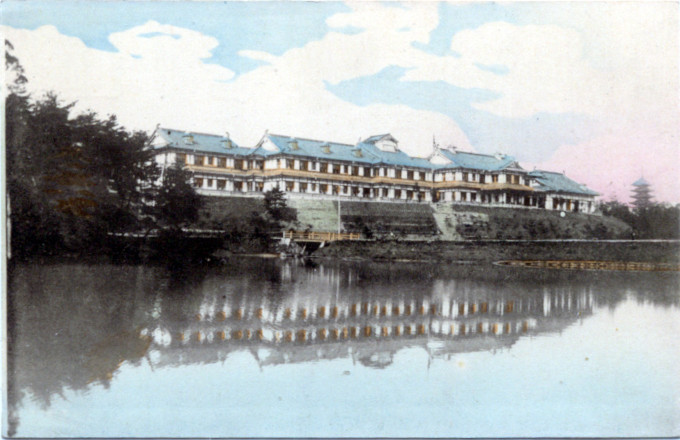
Nara Hotel, Nara, c. 1910. Opened in 1909 by the Imperial Government Railways, the hotel was designed in a Momoyama-style by architect Tatsuno Kingo.
“Swarm of deer at Nara Park”, Nara, c. 1910.
Daibutsu, Nara, c. 1920.
“It is said in Japan that drinking tea together constitutes an act of peace. At the Nara Hotel, an oddly shaped teapot is laid on its side and said to be ‘sleeping’. Pico and I watch it, as if watching a child. It doesn’t move. We talk quietly. We hear faint music. In the adjoining room, there is a photograph of Albert Einstein playing the piano at this hotel, where the Dalai Lama also likes to stay.”
– Facing the Wave: A Journey in the Wake of the Tsunami, Gretel Ehrlich, 2013
From the wiki: “Developed by the Cabinet Railway Authority of the Japanese Imperial Government Railways, designed by Tatsuno Kingo (who also designed Tokyo Central Station) and opened on October 17, 1909, the Nara Hotel is one of the most historic hotels in Japan. Constructed of a Momoyama Period-style design, the hotel sits like a palace atop a hill on the south edge of Nara Koen [park] with its sacred deer. It has been visited over the years by many historical figures and dignitaries, including Bertrand Russell, Sergei Prokofiev , Edward VIII, Albert Einstein, Charlie Chaplin, and Helen Keller. The Nara Hotel still retains the dignified splendor of the age in which it was founded in a quiet corner of Nara Park over a century ago.
“As well as being the birthplace of the nation, Nara is the place where the foundations of many aspects of Japanese culture were first laid down. Dotted with ancient shrines, temples, and buildings that are designated world heritage sites and national treasures, Nara is famed for the deer that roam its expansive park, and is referred to by the ancient name of mahoroba, ‘the utopian place’. The city retains its historical and cultural traditions and is blessed with a wealth of natural beauty.”
- Receiving room, Nara Hotel, c. 1920.
- Corridor, Nara Hotel, c. 1920.
- Smoking room, Nara Hotel, c. 1920.


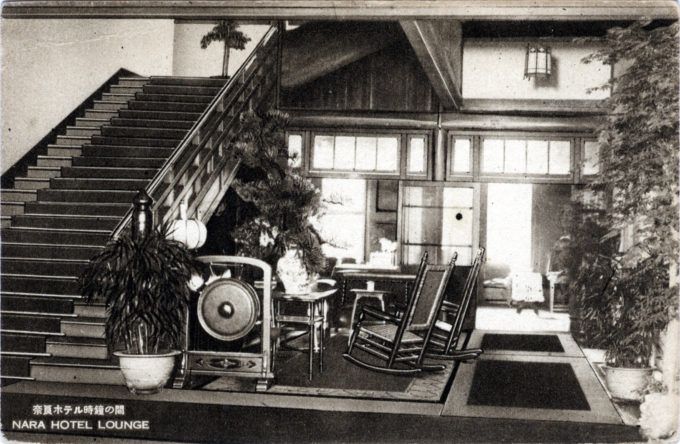
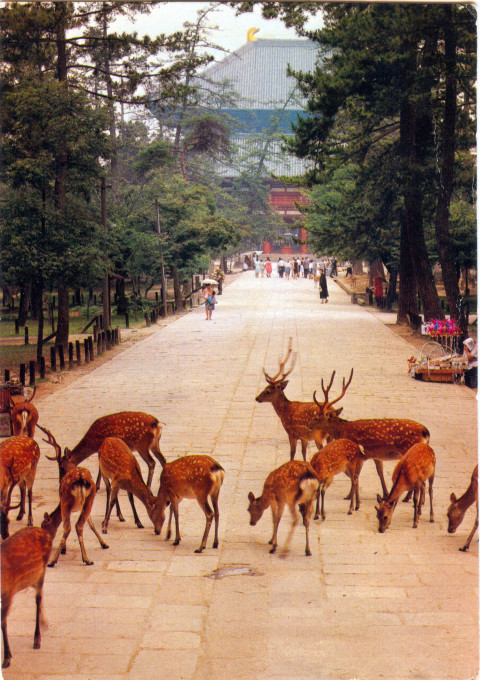
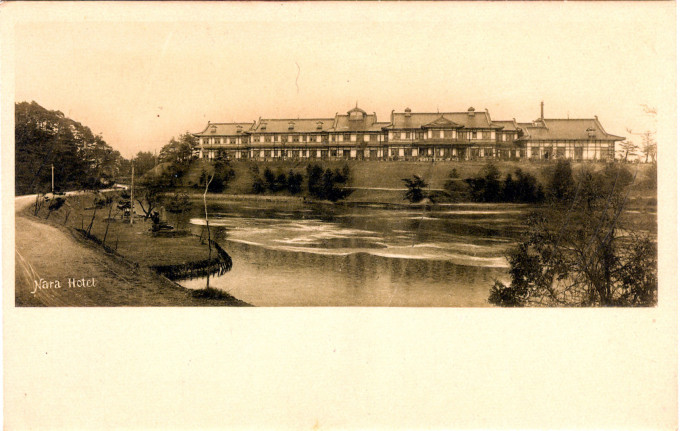
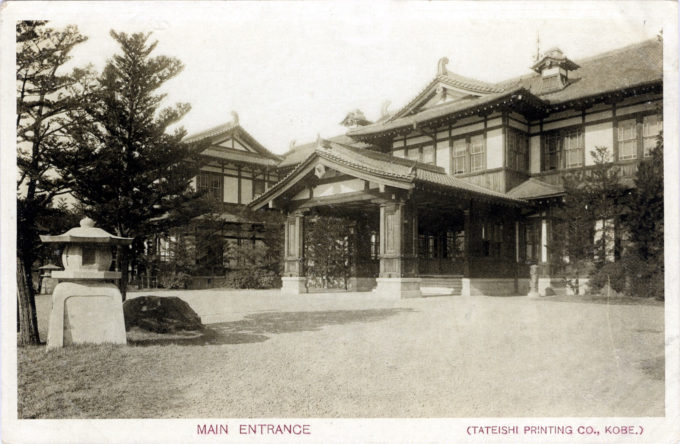
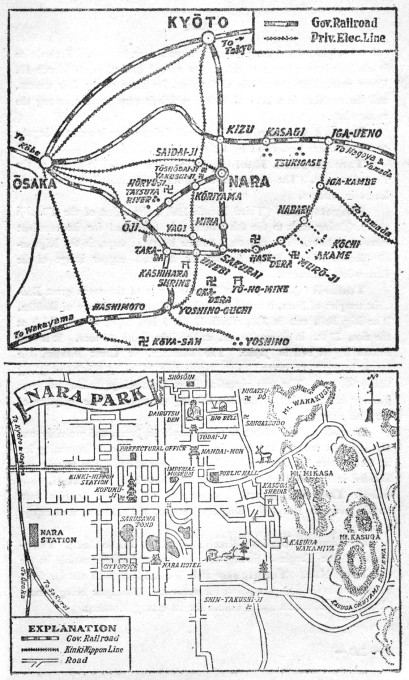
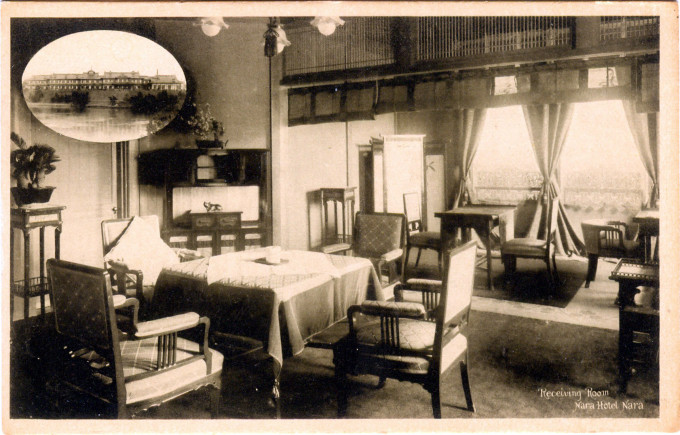
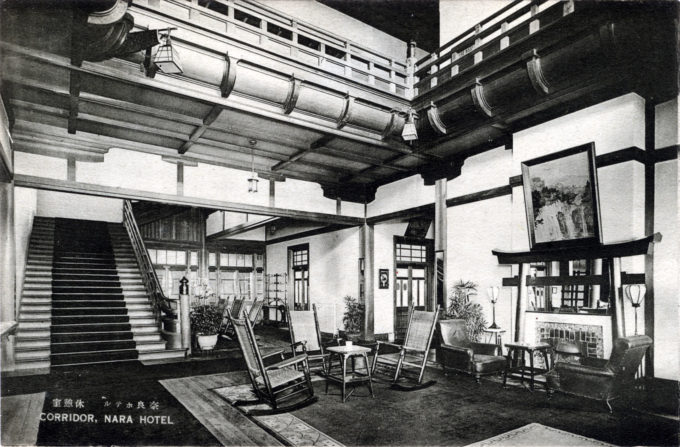
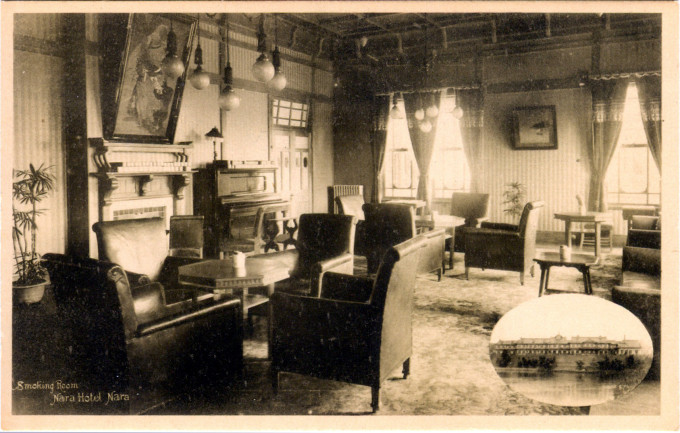
Pingback: Imperial Hemp Building, Nihonbashi, c. 1930. | Old Tokyo
Pingback: Daibutsu, Nara, c. 1920. | Old Tokyo